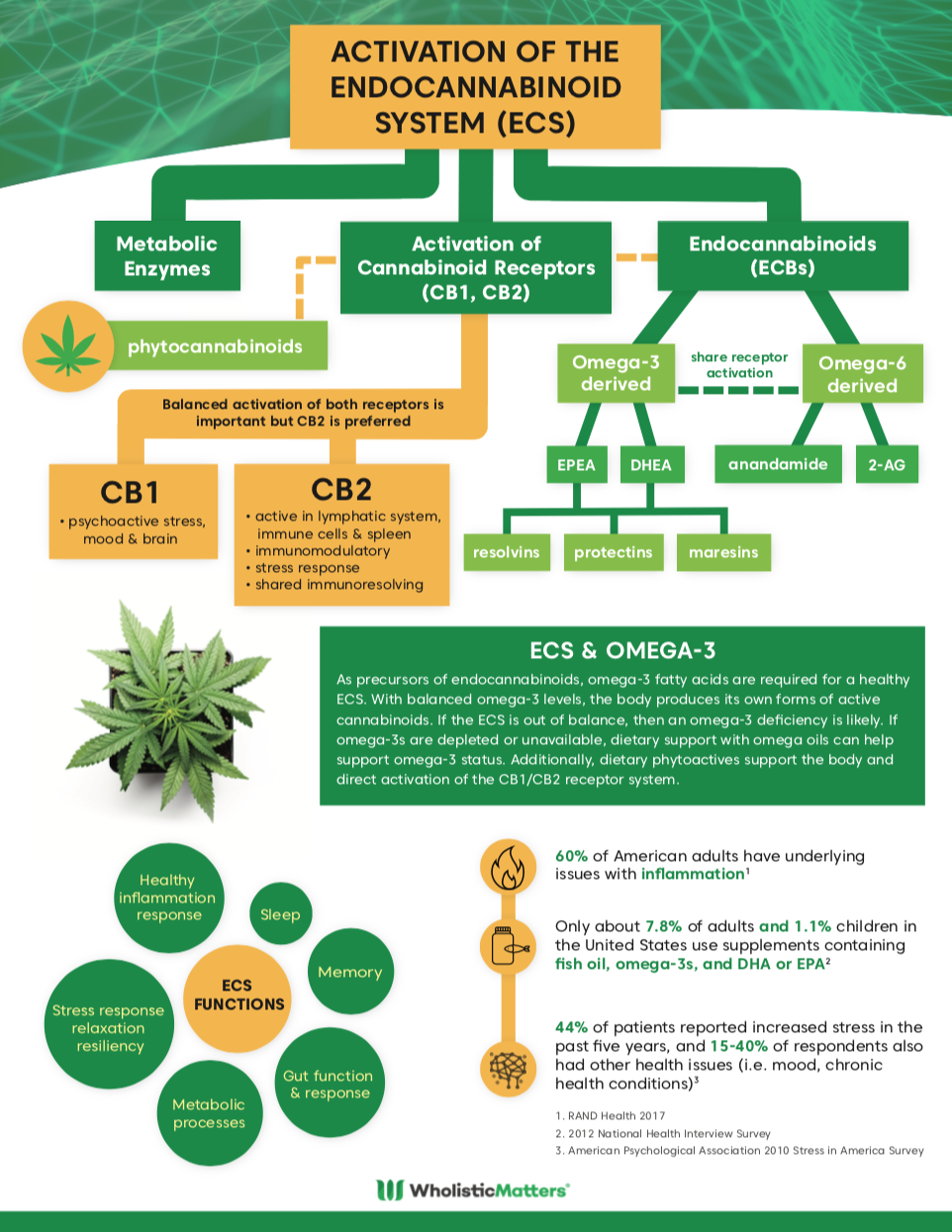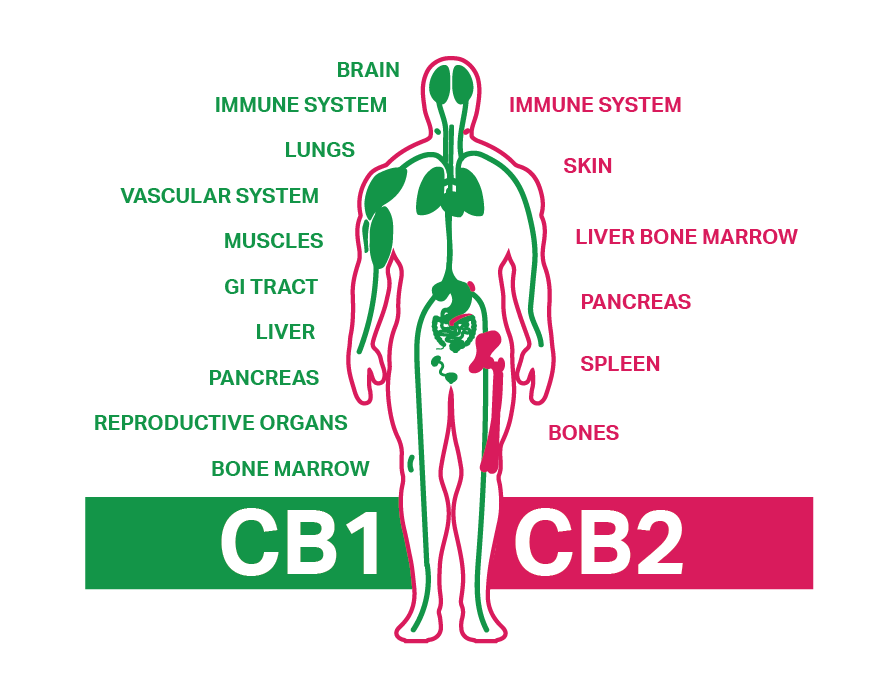 Bookmark
Bookmark The Endocannabinoid System
Defining the Endocannabinoid System
The endocannabinoid system (ECS) is a complex network of receptors, signaling molecules, and metabolic enzymes that most people do not know about. A building body of research shows that the ECS has a significant influence on human health and well-being, serving an essential function in the human body: restoring homeostasis via physiological and regulatory mechanisms. The ECS is made up of cannabinoid receptors, endocannabinoids, and metabolic enzymes.
SUMMARY
From the discovery of the first phytocannabinoid, the endocannabinoid system has been of great interest to the scientific community for its nearly ubiquitous presence in the human body and its role in key physiological processes. This page serves as the hub for all information relating to hemp and the endocannabinoid system currently present in peer-reviewed scientific literature.
Structure of the Endocannabinoid System
What are endocannabinoids?
There are different types of cannabinoids. One type, called endocannabinoids, is produced on demand in the human body in response to elevated intracellular calcium levels in neurons.
Two of the most-studied endocannabinoids include:
- N-archidonylethanolamide (anandamide, AEA)
- sn-z-archidonoylglycerol (2-AG).
What are cannabinoid receptors?
Cannabinoid receptors are the primary targets of the ECS, bound by lipid signaling molecules called cannabinoids. There are two main types of cannabinoid receptors, which vary in their chemical structure and thus perform different functions in terms of diet, lifestyle, and nutrition:
Cannabinoid Receptor 1 (CB1) is associated with various effects:
- Psychoactive
- Neuromodulatory
- Analgesic
These effects are due to CB1’s activation by tetrahydrocannabinol (THC). Cannabinoid receptors in the brain are mostly expressed as CB1. CB1 is also found in adipocytes (fat cells), hepatocytes (liver cells), and musculoskeletal tissues.
Cannabinoid Receptor 2 (CB2) is associated with anti-inflammatory and immunomodulatory effects but no psychoactive effects. CB2 is expressed in body cells controlling immune function and (potentially) the central nervous system (CNS). Research suggests that secondary metabolites from phytonutrients in plant-based foods enhance the activity of CB2 receptors and confer healthy inflammatory responses.
Endocannabinoid System Activation
Everything you need to know about hemp, the endocannabinoid system, and omega-3 fatty acids
What are the major components of the endocannabinoid system (ECS)? How do omega-3 fatty acids and the ECS act synergistically? What are they key functions of the ECS in the human body? This helpful infographic provides a quick “ECS 101,” useful for a variety of educational situations. Download and print out your free copy today.
Download: View PDF
Role of the Endocannabinoid System
Endocannabinoid system receptors and cannabinoids are present and vital in nearly every area of the human body. Thus, disruption of the ECS has a serious, negative impact on human health.
The ECS is responsible for basic homeostatic roles:
- Relaxation
- Metabolism
- Sleep
- Memory
The ECS is also responsible for more complex functions:
- Neuroplasticity
- Modulation of embryonic development
- Neuroprotection
- Immunity and inflammation
- Apoptosis
- Carcinogenesis
- Pain and emotional memory
What is endocannabinoid tone?
The “endocannabinoid tone” describes as state of proper functioning of the ECS, which depends on the density, functional status, and availability of endocannabinoids. Endocannabinoid tone is influenced by multiple external factors, such as physical activity, eating a well-balanced diet of macronutrients, micronutrients, and phytonutrients, and stress modification. Whatever the reason, endocannabinoid deficiency prevents the ECS from properly regulating homeostasis in the body, but supplementation with phytocannabinoids can resolve some of these issues.
We hope you have enjoyed this snippet from our Endocannabinoid System portal and that you are eager to learn more about the endocannabinoid system. Click here to read more and see related posts.











